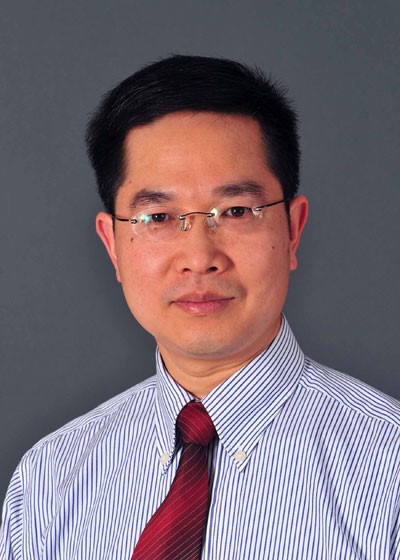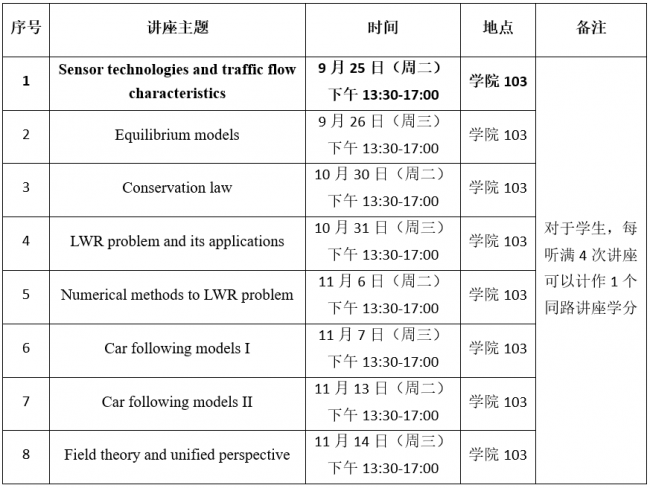Sensor technologies and traffic flow characteristics

主讲人:Dr. Daiheng Ni
邀请人:李林波 副教授
时间:2018年09月25日(周二)13:30—17:00
地点:交通运输工程学院103会议室
主讲人简介
Dr. Daiheng Ni is a tenured Professor in the Department of Civil and Environmental Engineering at University of Massachusetts Amherst, USA. His research interests include: Traffic Flow Theory and Simulation, Connected Vehicle Technology, Intelligent Transportation Systems (ITS), and Air Traffic Modelling and Control. He has published over 100 journal articles and conference papers in the above areas. He was previously a Member and now a Friend of Transportation Research Board (TRB) Committee on Traffic Flow Theory and Characteristics (AHB45). He is the author of textbook Traffic Flow Theory: Characteristics, Experimental Methods, and Numerical Techniques (1st edition, ISBN 9780128041345, eBook ISBN: 9780128041475) published by Elsevier in 2015. He teaches graduate and undergraduate courses including: CEE 310 Introduction to Transportation, CEE 411/511 Traffic Engineering, CEE 520/521 Traffic Flow Theory and Simulation I/II, and CEE 590I Signalized Intersections.
主讲内容简介
This lecture starts with a discussion on traffic sensing technologies. These technologies include point sensors such as loop detectors and video cameras that observe traffic at a fixed location on highways, mobile sensors such as GPS and cell phones that move with a specific vehicle, and space sensors such as helicopters and satellite imaging that take a snapshot of roadways. Building on sensor technologies, traffic flow characteristics such as flow, speed, and density are defined. Considering that the above definition of traffic flow characteristics is sensor-dependent and inconsistent, a more scientific definition of traffic flow characteristics is presented based on an area in time-space domain as the common basis. In addition, a three-dimensional (3D) model of traffic flow is presented that represents cumulative number of vehicles as a function of time and space, from which traffic flow characteristics can be determined as derivatives of the 3D model.
附:本次讲座为交通安全学科创新引智基地(“111计划”)高端讲座,交通流理论系列讲座的第一讲,后续讲座安排如下:
交通安全学科创新引智基地(“111计划”)高端讲座
交通流理论系列讲座

欢迎各位老师、同学参加同路人学术论坛!
交通运输工程学院研究生会
交通运输工程学院青年教师沙龙